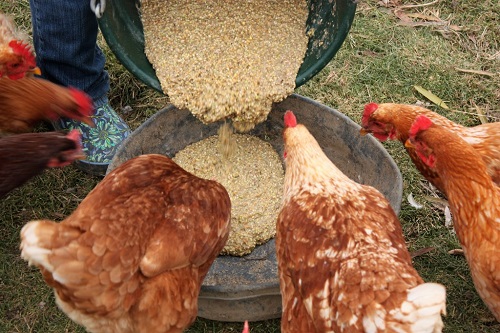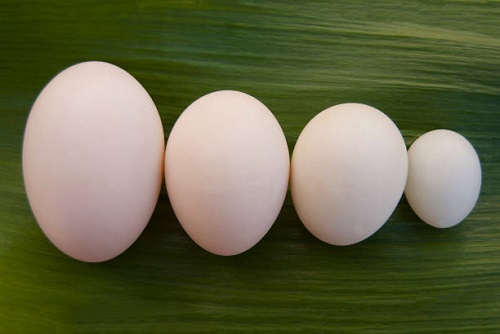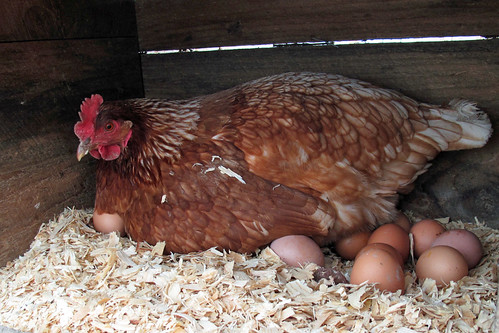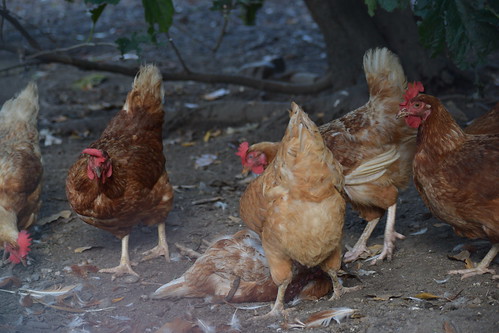Have you heard someone talk about feeding chickens with fermented feed? Did you know the importance and benefits of fermented feed to chickens and how it can help you save money?
Many chicken farmers are inquisitive to get more information about making fermented feed and giving the same to chicken for improved performance. Some farmers want to stop feeding their birds with premixed poultry feed or look for ways to increase digestibility as it matters in livestock production.
Ever since the ban of antibiotic growth promoters by the European Union, commercial livestock producers and researchers were on the lookout for alternative means to enhance animal growth and yield until fermented feed was found to be safe for animals as well as humans.
What is Fermented Feed?
Fermented feed is any feed that has been broken down (fermented) by natural bacteria or yeast in the feed. The feed fermentation process takes a few hours or days before it is served to birds. However, it is better to leave the feed to ferment for at least 3 days to allow it to break down well.
Fermented feeds are also referred to as probiotics because they are rich in healthy bacteria and/or yeast that the birds would benefit from. When feed is fermented and given to chickens, it improves gut health, thus increasing digestibility and allowing easy absorption of vital nutrients from the feed.
Fermented feed is normally fed in a wet state or puree because it has been soaked and covered water to ferment and later drained. This is the best state to serve the feed and of course, it is safe to feed your chickens. It is worth mentioning that fermented feeds are more palatable, very rich in vitamins B, C and K and natural enzymes. The proteins present in them are also usable unlike when the feeds are unfermented.
Benefits of Fermented Feed to Chickens
1. Reduces feed intake and feed cost
Soaking and fermenting of feed make it easier for chickens to digest the feed and the nutrients become more readily available to them, thereby reducing feed intake (about 30-50%) because the birds are quickly satiated. It has been found that fermented feed is also palatable to the chickens and feed wastage is reduced. This is because the feed is compacted together. The economic benefit of this is that 30-50% drops in feed consumption help you to save on feeding costs.
2. Improves the health of birds
One of the reasons for fermenting feed is to enhance the health of our birds. Probiotics improve birds’ gut health and fight off diseases. Research has shown that feeding poultry birds with fermented feed help in reducing pathogenic microorganisms like salmonella and campylobacter in the digestive tracts, especially in the gizzard and crop.
3. Firmer and less-smelly poop
Birds fed on fermented feed have firmer and less-smelly faeces. When the poops of your birds are more solid, you spend less on changing beddings or litter and cleaning is easier.
4. Increases eggshell thickness and egg weight
The eggs of hens raised on fermented feed are always heavier, have larger yolks and the eggshell is thicker. Perhaps, this is due to the high digestibility, availability of vital nutrients and more absorption of minerals.
5. Increases growth rate
Fermented feed means a better feed conversion ratio. Birds have a lower feed conversion ratio when they eat fermented feed. For meat birds like broilers and turkeys, there is improvement in their growth rate as well as weight gain. For laying birds, there is an increase in egg laying performance. These happen because the birds digest and convert the feed easier and faster to utilize the nutrients for vital body functions and production.
6. Increased protein intake
As mentioned above, fermenting feed increased the availability of the nutrients in the feed. Soaking and fermenting increase crude protein and phosphorus availability to the birds’ digestive tract.
How to Make Fermented Feed
- Get food-grade buckets and fill them with feed to about two-thirds full.
- Pour water into the containers and allow the feed to be fully submerged in water by 1 inch. Stir the water and feed.
- Place the lids on the containers but don’t cover too tightly to allow the gas to escape when fermentation starts.
- Check the bucket after 12 hours to see if the feed has absorbed the water and if it is covered by water. If it is not covered, add more water and ensure the feed is submerged and covered. This is very important to prevent mold risk.
- Place the buckets in a warm environment because fermentation is faster at a warmer temperature. Also, leave content for three days or more for proper fermentation.
- Stir the content every day and look for signs like pleasant sour smell, smell of yeast, bubbling, or white film. Those are signs of fermentation. If you notice a putrid or rotten smell or see green moldy growth, discard the content. It is not safe for your birds.
How to Serve Fermented Feed to Birds
- Ensure the fermented feed is well-drained before serving. You can use a strainer or sieve.
- Spread the feed on feed troughs or feeders. Ensure you serve the birds what they can finish in 20-30 minutes. Wet or fermented feed molds quickly when left in the feeders and moldy feed is dangerous to poultry birds.
- Allow your birds have access to clean water.
- You can feed your birds with fermented feed every day. It is safe to do so.
Image Credit: thisbeautifulfarmlife.com




The feces of birds fed fermented feed are stiffer and less stinky. When your birds’ feces is more solid, you spend less time replacing beddings or litter and cleaning is easier. Thank you!
Many chicken farmers are interested in learning more about the production of fermented feed and how to feed it to chickens to increase performance. Thank you!
I am new for chicken poultry farm,
Is fermented feed is recommended for both grower and layer chicken??
if yes which part is fermented and which part is not fermented or the whole feed constituent can be fermented??
The whole feed can be fermented. It is safe for both layer and grower.